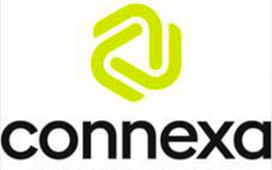VentureBeat presents: AI Unleashed – An exclusive executive event for enterprise data leaders. Hear from top industry leaders on Nov 15. Reserve your free pass
For the first time ever, Formula 1 Grand Prix cars will be racing through the heart of Sin City on the Las Vegas Strip in a historic event running Nov. 16 to 18 — and I could not be more excited.
I spent just shy of 10 years working in motorsports, first with Mitsubishi Ralliart, for which I got to travel the world and experience the birth of bringing IT services to engineers on the ground at rally events, and then with Honda Racing, one of the biggest names in Formula 1.
You can also spot me in the documentary Brawn: The Impossible F1 Story being released by Hulu and Disney+ on Nov. 15 — because I was also part of the Brawn GP team that existed just one year, and had no money or sponsorship, yet won the Formula 1 world championship.
In my early days in motorsport, we would bend the rules to get car data into the hands of my engineers faster, and I was an IT team of one. But when IT in motorsports took off at the beginning of the 2000s, every team started bringing an IT team to all of the racing events. It was clear that we could use technology to make ourselves more competitive. Clearly, it worked.
VB Event
AI Unleashed
Don’t miss out on AI Unleashed on November 15! This virtual event will showcase exclusive insights and best practices from data leaders including Albertsons, Intuit, and more.
Helping to digitally transform motorsports certainly was a learning experience. Much of what we did and learned also applies to enterprise IT. Here are some of my key takeaways from my exciting and rewarding time in Formula 1 and how you can use it to drive your business forward.
Don’t be afraid to use bleeding edge technology
During my time in motorsports, one of the big IT-related changes involved virtualization technology. Adopting virtualization allowed us to consolidate more compute into tiny spaces and save money. This meant we could have a flat topology for things like IPTV, so we could bring it to more places — into the garage and back to our engineering team facility at headquarters.
Having the power of virtualization was extremely valuable when a volcanic eruption in Iceland disrupted air travel out of Europe, and some of our engineers couldn’t fly out to the track in China. Because we had built this topology supporting live voice, live telemetry and live IPTV, we didn’t need our engineers there. They could be virtual; we created engineer avatars for them.
Even before that, in 2006, my Formula 1 team went all flash. Today, all flash is a given, but at the time I couldn’t even buy an all-flash laptop, so we had to fashion our own flash solution. This was because when we went from a V10 to a V8 engine, the sound of the V8 revving caused the physical disks to hit each other, and everything in the garage went blue screen and died.
But flash memory also provided us with a huge performance advantage. I could process and analyze data and provide it back to the driver much faster, which supercharged our entire environment.
The larger point is that whether you’re part of Formula 1 or any other organization, start using bleeding edge technology. You may be hesitant to do that for whatever reason, but even if you just test technology or use it for a single purpose, it could have a massive impact on your business and provide competitive advantage. You won’t know until you give it a try.
Employ data, software and HPC to test and understand the physical world
Traditionally, Formula 1 did a lot of physical testing. Honda Racing had a whole team that would go to Spain to race all week, every week, to test cars physically. That’s all gone now.
That variety of testing disappeared in 2009. Car part testing, wind-tunnel testing and tire testing can now all be done in software. That’s a good thing because it was complex, costly and carbon footprint-intensive to transport and operate all the equipment needed for such testing.
We also built driver in-loop simulators because taking cars to test a track was against the rules. So, we built it all in software. We’d send teams around the world to laser scan the surfaces of the tracks, and we’d use that data to build the characteristics of the car in software based on fluid dynamics and mechanical grip based on the track surface. This was a precursor to the digital twins that enterprises in sectors such as manufacturing are starting to adopt today.
Your enterprise can likewise use data, software and high-performance computing (HPC) to test solutions in the digital world; decrease your complexity, cost and carbon emissions; use data from your tests to gain a greater understanding; make more informed decisions; and win.
Lighten up to increase your performance and make your business more powerful and efficient
The heavier a car is, the slower its performance tends to be. Physically heavy vehicles are also extremely costly to ship where they are needed. The same holds true for enterprise IT.
Your business also can be slowed by data infrastructure that makes it difficult for the people to find and easily use your data. But with ease-to-use, highly performant, reliable and scalable infrastructure that integrates with your modern applications and can burst to the cloud, you‘ll need less infrastructure, use more of what you have, lower your carbon footprint because you’ll have less IT infrastructure to ship and run and strike the right balance of power and efficiency.
The right infrastructure is akin to a Formula 1 car. Formula 1 vehicles are some of the fastest cars in the world. They are also far more fuel-efficient than the average car on the road.
Use data to make decisions – data may even empower your business to slay a giant
Formula 1 teams at the track are essentially huge IoT deployments. Live data is coming off cars, and Formula 1 teams overlay that with data about weather, the surface on the track, where the car is on the track, what other teams are doing and much more. That data is fed into AI and machine learning (ML) models to get insights and make decisions to be more competitive.
In Formula 1, weather can have a major impact on performance. But sometimes when there’s bad weather, you see giant-slaying because the big teams may stick with their existing processes while small teams can make huge progress by using great software models to make really good decisions to negate their performance deficit. Challenger businesses can use a similar approach.
When I was on the track, we processed a lot of that data right at the edge. We got the data we needed, and then we sent only relevant data home to our engineering facilities. You can do the same thing in your enterprise to process and employ data faster and to greater advantage.
My motorsports team had to create our own metadata in SQL to streamline how quickly we could get data to the people who needed it. Metadata is important to help you understand the value of the data you are storing.
For example, if something has gone wrong, you want to be able to look back at a point to figure out how you can solve the problem. After all, you learn the most from your failures. Metadata helps you go back to that point in time and understand every bit of data that is available to so that you can explore what led you to a good or bad decision.
How a team handles, processes and understands data can make a massive difference in its performance. You want everything to come together in one visualization, streamline and automate your processes and be able to do live decision making.
When you have the technology to do that, you can compete with even the biggest companies and teams and win.
Ian Clatworthy is director of digital infrastructure product solutions marketing at Hitachi Vantara.
DataDecisionMakers
Welcome to the VentureBeat community!
DataDecisionMakers is where experts, including the technical people doing data work, can share data-related insights and innovation.
If you want to read about cutting-edge ideas and up-to-date information, best practices, and the future of data and data tech, join us at DataDecisionMakers.
You might even consider contributing an article of your own!











